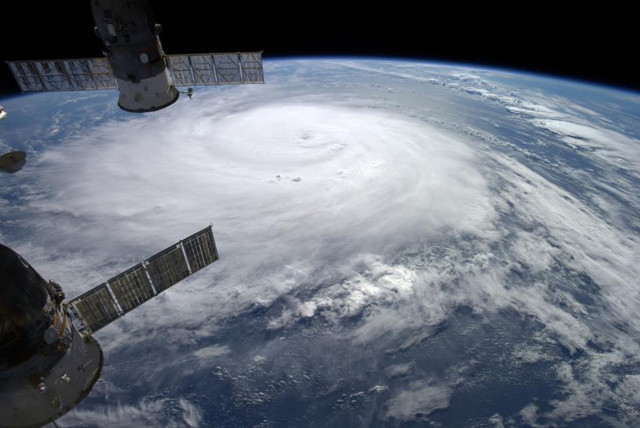Israeli scientists link dinosaur-era ocean swirls, modern climate change

Hebrew University team evaluates role of gyral circulation on temperatures in tropics, poles during the Cretaceous period.
A previously unknown mechanism that significantly influenced Earth’s climate more than 60 million years ago could potentially aid in modeling and predicting the impacts of climate change in the modern era, according to researchers from the Hebrew University of Jerusalem.
The study, published this month in Nature Communications, investigates the role of gyral circulation (large ocean swirls) in transporting warm water from the tropics to the poles during the Cretaceous period, around 145 to 66 million years ago, when dinosaurs roamed the Earth. Climate scientists are often interested in this period because of the high levels of carbon dioxide in the atmosphere and the high plant and animal biodiversity during that time.
Carbon dioxide, or CO2, is the gas most often associated with climate change.
Specifically, the Israeli researchers applied an analytic model they developed to evaluate wind-driven circulation at the ocean’s surface during the period.
How did the researchers conduct their analysis?
The researchers “conducted a thorough analysis using computer models that simulate ancient climates,” the university explained. “Their findings revealed that the movement of Earth’s continents during the Cretaceous period caused a slowdown in the large swirling ocean currents responsible for carrying warm water from the equator to the poles.”
The university said this slowdown disrupted how the ocean regulated its surface temperatures, significantly increasing temperature differences between the poles and the tropics.
“These findings align with geological evidence from the Cretaceous era, providing a more comprehensive understanding of past climate dynamics,” according to Hebrew U.
Although the research highlights the pivotal role of ocean basin geometry in the past, the scientists said it underscores the significance of oceanic processes in shaping contemporary climate systems, as ocean circulation patterns continue to play a crucial, although sometimes overlooked, role in regulating the global climate.
The Environment and Climate Change portal is produced in cooperation with the Goldman Sonnenfeldt School of Sustainability and Climate Change at Ben-Gurion University of the Negev. The Jerusalem Post maintains all editorial decisions related to the content.
Jerusalem Post Store
`; document.getElementById("linkPremium").innerHTML = cont; var divWithLink = document.getElementById("premium-link"); if (divWithLink !== null && divWithLink !== 'undefined') { divWithLink.style.border = "solid 1px #cb0f3e"; divWithLink.style.textAlign = "center"; divWithLink.style.marginBottom = "15px"; divWithLink.style.marginTop = "15px"; divWithLink.style.width = "100%"; divWithLink.style.backgroundColor = "#122952"; divWithLink.style.color = "#ffffff"; divWithLink.style.lineHeight = "1.5"; } } (function (v, i) { });

